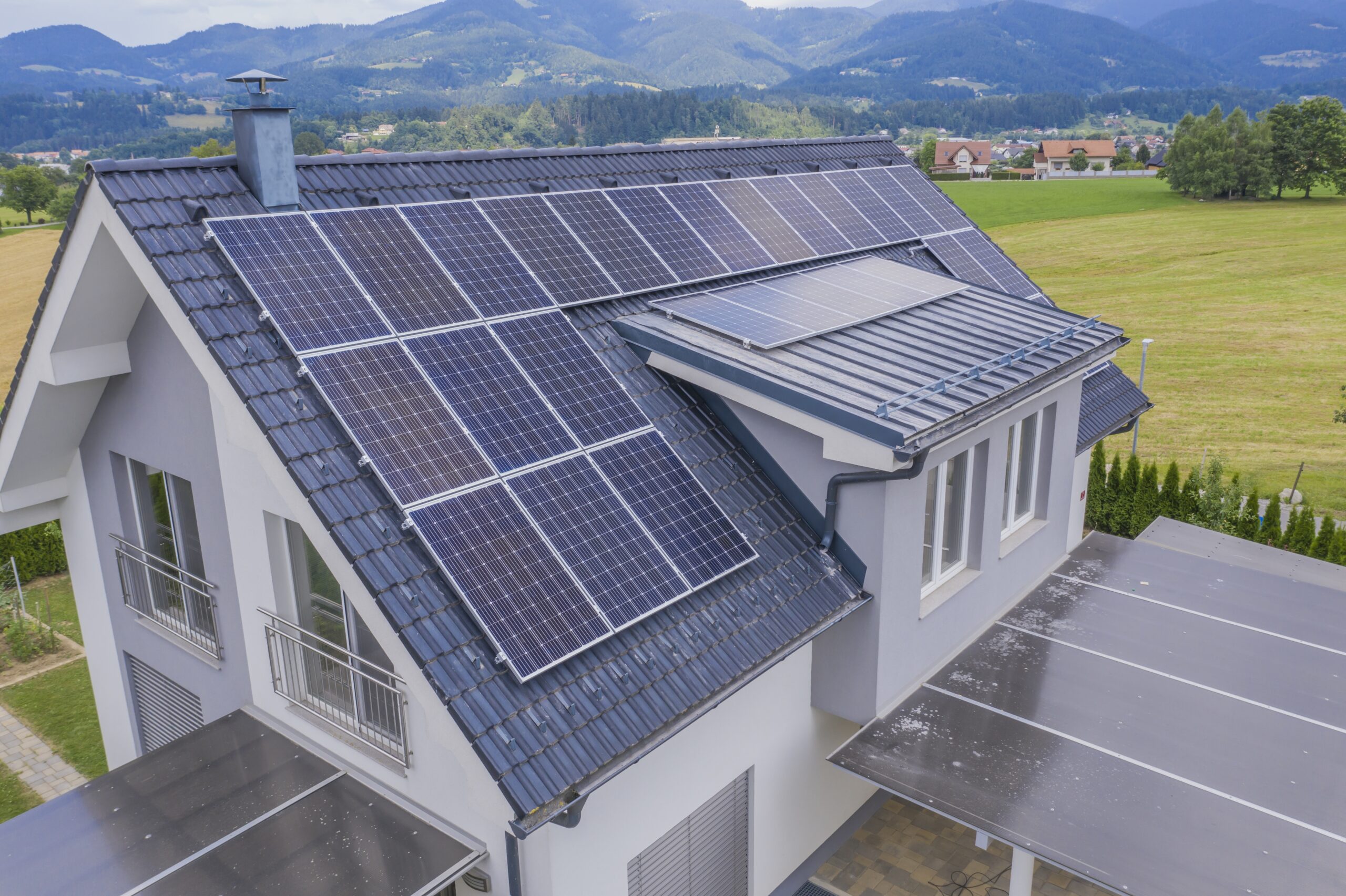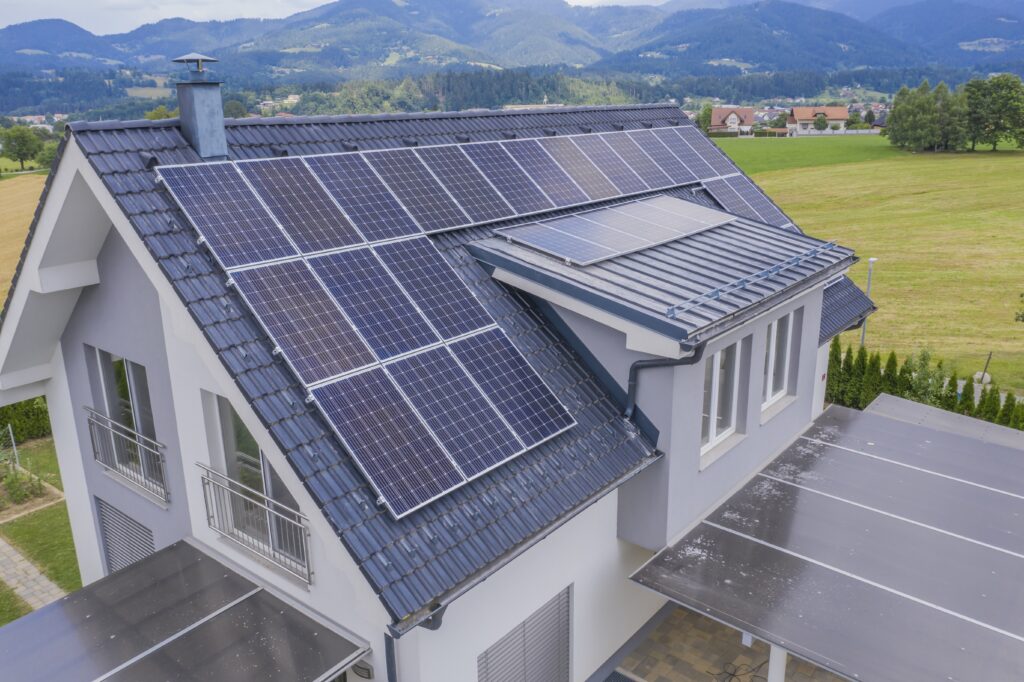What’s the Difference Between Commercial and Residential Solar Panels?


A month ago, my neighbour Sarah decided to finally get solar panels on her three-bedroom home in Brisbane. At the same time, down at the local industrial estate, my mate who runs a small manufacturing warehouse is still weighing whether to go solar. Both asked me the same question I get asked all the time: Is there a real difference between home solar panels and business ones?
The answer is a lot more than just “size.” Yes, business systems are bigger, but that’s the smallest part of the picture. After years in the Australian solar game, I’ve learned that the two setups differ in almost every important way.
I want to break down the key differences that matter when you’re choosing between the two, because choosing the wrong one can end up costing you thousands.
Why Size Matters (But It’s Not Everything)
What This Means for Your Home
In Australia, the sweet spot for solar systems usually lands between 5kW and 10kW. That range means you’re looking at around 15 to 30 panels, all perched on your roof. Sarah went for a 6.6kW setup, which gives her 20 panels and churns out about 26kWh each day under the bright Queensland sun.
The size isn’t just a guess. Your installer checks the past year’s power bills, counts everyone in the household, and takes a close look at energy guzzlers like pools and ducted air conditioning. The average family typically pulls around 20kWh a day, so a 6- to 7kW system usually seals the deal.
The entire system slid on Sarah’s roof without a hitch. Her installer needed about 40 square metres of north-facing space, leaving plenty of room for the TV antenna and that satellite dish she’s still hoping to take down one of these days.
Scaling Up Commercial Solar
My friend’s warehouse is in a whole other league. The place hums with conveyor belts, bright lights, and climate control that would make a household meter twitch like a penny slot. Start with a 30kW inverter for a small factory, and next thing you know, you’re ordering multiple megawatts for a 24/7 plant.
Ahlec Solar just finished a run for a local mall: 800 panels spread over a patchwork of roofs. The array puts out enough juice to keep the whole place cool, keep the escalators moving, and keep the storefronts bright during the dinner rush. When you stack that against the number of compressors and in-rush lighting that kick on at 5 PM, the numbers get big fast.
The biggest driver of scale is appetite. Your house might pull down 20-30kWh in a day. A coffee shop can easily hit 100-200kWh before lunch. A big factory? One megawatt-hour is just the warm-up.
The Tech That Matters
Home Systems: Keep It Simple, Keep It Working
Residential solar has become incredibly dependable over the last ten years. Most homes use “string inverters,” which are simple boxes that change the DC power from your panels into the AC power your appliances need. These inverters are designed to last 10 to 15 years and can handle whatever your household demands.
The panels are usually monocrystalline silicon, the familiar black ones you see on roofs everywhere. They convert about 20 to 22 per cent of incoming sunlight into electricity. That number might not sound spectacular, but it’s among the best you can buy for residential use today.
Sarah’s setup includes monitoring software that buzzes her phone if something isn’t working. She can check her power production while sitting at her desk at work, and the habit has turned into a mild obsession.
Commercial Systems: Built for Business
Commercial solar ups the ante because the stakes are higher. When your livelihood rides on keeping the lights on, you need tough, reliable gear.
Many commercial solar companies Sunshine Coast now recommend three-phase inverters that can take huge power loads without missing a beat. Sure, the initial price tag is higher, but they’re built to last 20 years or more even in the toughest Australian sun and dust storms.
I’ve watched businesses switch to bifacial panels. They grab sunlight from the front and the back, giving a 20 to 30 per cent bump in energy. A few have even added tracking systems that swivel like giant sunflowers, following the sun all day. Yes, tracking adds more moving parts and dollars up front, but the extra power usually pays back that cost over time.
Ahlec Solar focuses on making these smart, complicated setups. We weigh the initial spend against years of energy generation to hit the perfect price-to-performance ratio for each client.
The Money Talk Nobody Wants to Have
What Homeowners Pay
Sarah’s 6.6kW system ran her $12,800 after rebates, and that’s pretty normal for a good home setup in 2024. The federal STC rebates lopped off around $4,000, so the total feels a lot friendlier for her monthly budget.
Her quarterly electricity bill fell from $350 to about $80. Now it’s mostly just the daily supply charge plus some evening draw when the solar panels are not making power. At this rate, she expects full payback in about 6 to 7 years, then she’ll enjoy 15 to 20 years of nearly free electricity.
For homeowners, financing is simple: pay the whole amount, get a solar loan, or set up a payment plan through the installer. Most banks now offer green loans at good rates just for solar projects.
Commercial Installations: The Numbers Don’t Lie
For a small business, the upfront cost usually runs between $80,000 and $150,000. Bigger industrial projects can easily surpass a million bucks. A buddy who runs a warehouse is budgeting about $120,000 for his setup.
The good news for businesses is the financing tools available. A Power Purchase Agreement (PPA) means a business can go solar with little or no cash up front. The business simply agrees to buy the power at a fixed, lower rate than the local grid.
Commercial systems often break even faster than home systems. Because businesses pay higher commercial electricity rates and can write off the solar investment for tax purposes, they usually see payback in 4 to 6 years.
Large-scale Generation Certificates, or LGCs, become a game changer for solar setups over 100 kilowatts. These tradable green credits add cash flow that can tip project budgets firmly into the black.
Navigating the Paper Jungle
Home System Paperwork
If you’re putting solar on your home, you’ll hardly notice the red tape anymore. A certified installer takes care of the council sign-offs and the local electricity distributor, and anything under 10 kilowatts usually skips the waiting line for the grid.
Take Sarah, for example. She signed the solar contract on a Monday, and three weeks later, the council permit and Energex’s green light for the grid connection were done. Those approvals are routine now, so while the forms fly, you keep living your life.
Business Bureaucracy
Put solar on a warehouse or a factory, and the forms multiply. Anything over 100 kilowatts can trigger a long list of extras: engineering sign-offs, electrical safety checks, and for some sites, a formal environmental check.
The grid connection for commercial projects gets so detailed that the utility will study how your solar will feed into, and might even export from, the local network. Depending on the network’s load forecasts, the study can stretch the timeline from weeks to months.
Ahlec Solar makes that red tape disappear for its business clients. We coordinate the engineering, file the permits, and push the utility approvals so your team stays focused on the business, not the paperwork.
Keeping Your Solar System in Top Shape
At-Home System Care
Home solar panels are designed to stay hassle-free. For Sarah, her setup is almost hands-free—the rain rinses the panels, and the inverter sends daily health checks on its own. Once a year, she gets a performance summary confirming everything is humming along.
When the panels start to gather a light film of dust, she simply gives them a gentle spray with the garden hose. With the panels under 25-year warranties and the inverter covered for 10, she can relax and think long-term.
Business System Oversight
Commercial solar, on the other hand, needs a bit more TLC. When every minute of downtime translates to lost revenue, preventative care is key. Most installers offer all-inclusive maintenance plans that cover routine check-ups, professional cleaning, and quick repair callbacks.
Sophisticated monitoring platforms keep a digital eye on every single panel, along with local weather and grid signals. If a performance dip is detected, an alert gets fired off to the service team, who can often diagnose and correct the problem without stepping on-site.
Big installations sometimes add a full-time energy manager. This specialist fine-tunes the system, balances battery storage, and enrols in grid services that can turn extra capacity into extra cash.
Choosing Solar the Right Way for You
Home Solar Choices
When thinking about solar for your home, stick to three basics: roof area, how much energy you use, and your budget. If you have a good north-facing roof and your power bills go over $300 every three months, solar is probably a good match.
Resist the urge to chase the lowest price. Better panels and a skilled installation team matter more than a small discount at signing. Sarah picked her installer because of solid reviews and a strong warranty, not the bargain price—and it paid off.
Ahlec Solar gives a clear energy analysis to show how much you’ll save and how big a system is right for you.
Solar for Businesses
If you own a business, go beyond simple number-crunching. Ask how solar fits into your long-range plans, your push for greener practices, and your daily operations.
Think about how fast you plan to grow when sizing your system. It’s usually cheaper to add a little extra capacity now than to add it down the road. Also, some factories plan their big machines to run during sunny hours to save power and cut costs.
Businesses face a different set of tax rules, but these can work in your favour. Accelerated depreciation schedules, along with investment tax credits, let you write off the cost of a solar project faster. That means the project can start delivering cash flow sooner, improving the overall return.
Future-Proof Your Business
Adding Battery Storage
More clients, whether at home or in the office, want to know about battery systems. For houses, a Tesla Powerwall or similar unit keeps the lights on during blackouts and makes sure they’re using as much of their solar power as possible.
In the commercial world, batteries do a few extra jobs. They can shave peak demand charges, provide backup power to mission-critical systems, and even participate in grid services like demand response. Prices for batteries keep dropping, so the economics keep getting better.
Tapping Into the Smart Grid
The grid itself is getting “smarter,” and that means new money-making chances. For houses, virtual power plants let small systems operate as a single, larger power source. Businesses can offer even more, like grid frequency regulation.
These chances are just getting off the ground in Australia, but the next ten years should see them become big revenue streams.
The Smart Move: Hire the Experts
Giving your home or your business a solar system is not a weekend project. The systems are more complicated than they used to be, and the stakes are high. Electrical work, roof checks, and all the permits need people who know what they’re doing. So leave it to the pros and keep the focus on running your business.
Ahlec Solar combines decades of hands-on experience in both home and business solar projects. Our team knows the different hurdles each type of installation can throw at you. We manage the technical details, financial planning, and regulatory red tape so you get the best possible outcome.
Solar technology has improved a lot in the last ten years, but deciding whether to put panels on a roof or a large commercial space still takes a personalised look at your needs. Don’t let a fast-talking salesperson rush you. Take the time to weigh your choices and team up with installers who care more about your ongoing happiness than closing a sale fast.
Want to see how solar can slash your energy bills? Reach out to Ahlec Solar for a no-pressure, in-depth consultation. We’ll walk you through everything—from the first site visit to keeping your system running at peak performance for years to come.
FAQs
1. What is the main difference between commercial and residential solar panels?
The key differences lie in size, system complexity, and energy demand. Residential solar panels typically serve smaller loads (5kW–10kW), while commercial setups range from 30kW to multiple megawatts. Commercial systems also require more advanced tech like three-phase inverters and are designed for higher efficiency and durability.
2. Are commercial solar panels more efficient than residential ones?
Yes, commercial panels often use bifacial technology, tracking systems, and higher-efficiency modules. These setups are optimised for maximising ROI over larger surfaces and higher energy usage, whereas residential panels prioritise cost-effectiveness and space-saving.
3. How much does a commercial solar system cost in Australia?
A typical small commercial solar system costs between $80,000 and $150,000, while large-scale projects can exceed $1 million. Costs vary depending on system size, panel type, site conditions, and financing methods like PPAs or green loans.
4. Can homeowners and businesses claim solar rebates in Australia?
Yes. Homeowners can claim Small-scale Technology Certificates (STCs), while businesses installing systems over 100kW may qualify for Large-scale Generation Certificates (LGCs). Both types of systems also offer tax benefits and depreciation options.



